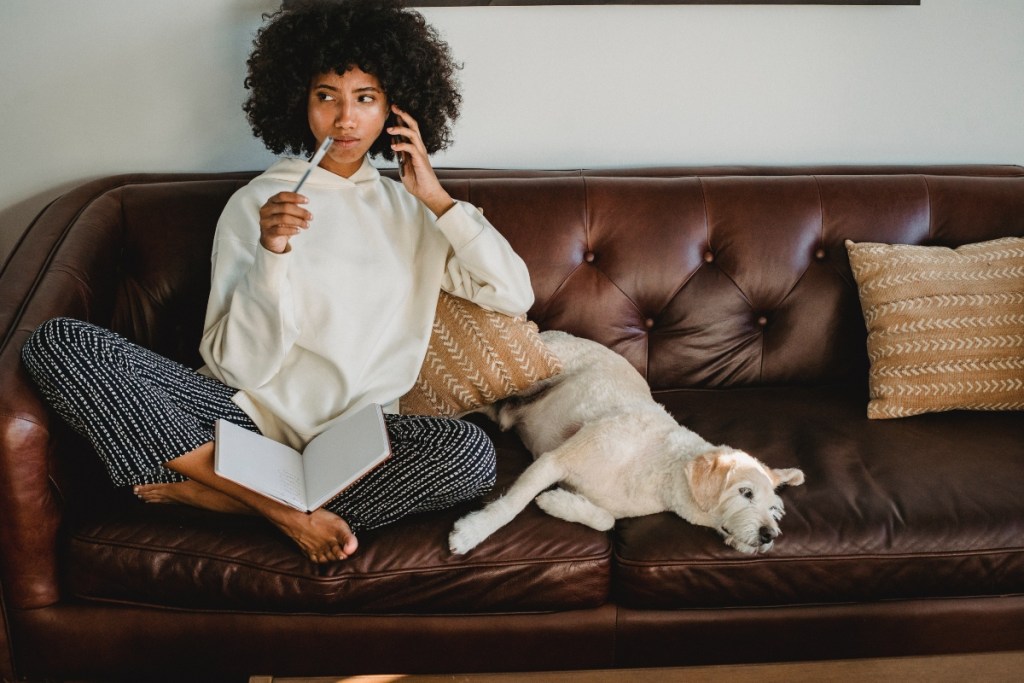Our couches see a lot of action throughout the day. Between eating takeout, binging Netflix, recovering during sick days, and hours spent lounging around, our sofas become a playground for dirt, food, and other debris. Unfortunately, it’s not uncommon for this piece of furniture to be neglected during cleaning time. While we are all aware that our beds harbor dead skin, dirt, and grime, we often forget that so do our couches.
Today we’ll be looking at the best methods of cleaning your living room couch. Knowing how to deep clean couches is critical for maintaining a healthy, allergen-free home environment. Below are our tips for cleaning your sofa no matter what material it’s made of or how often you put it to use.
Why you need to clean your couches often
Have you ever lifted your couch cushions to find a complex time capsule of all of the activities you’ve embarked on in the prior months? Food crumbs, pencils, hair, dirt, and maybe even a toy or two had somehow weaseled their way into the heart of your living room couch.
Like beds, couches also collect debris and small particles over time. Humans and animals shed skin cells and hair daily, so it’s no wonder that the couch would collect some of these fallen fragments.
Cleaning your couch often will prevent these particles from gathering too greatly and causing an allergic reaction. After all, no matter who you are, enough dirt and dust will make you sneeze. And if you spend your sick days on the couch, that’s all the more reason to invest in a deeper cleaning routine to prevent the spreading of germs.

How often should you clean your couch?
According to many experts, vacuuming your couch once a week is sufficient to maintain a clean space. While it’s always encouraged to do a seasonal deep clean for your larger furniture, doing a weekly cleanse is great for preventing allergens.
Vacuum up any loose debris once a week, and your space will feel much more refreshing. If you choose to take longer naps on your couch, it’s recommended that you use a sheet over the cushions to protect your furniture from any small particles further.
How to clean your couch
If you’re unsure how to clean your couch properly, don’t fret. It’s important to clean your couch based on the type of material that it’s made of to ensure a proper cleanse. Below are our best tips for deep cleaning couches.
If it’s made of fabric
If your couch is made of fabric, you can opt for a small fabric cleaner like Lysol or Febreze to help disinfect and refresh your cushions. Lift the cushions and vacuum up any loose material that had fallen beneath. Follow up with a spray of your choice and allow the cushions to air dry.
If it’s made of leather
After vacuuming any loose material beneath the cushions, leather couches are best cleaned with specialized leather cleaning wipes. Gently use the wipes to disinfect the couch surface. A specialized leather cleaning solution will protect your furniture during the cleaning process.
If it’s made of pleather
Pleather couches are fairly easy to clean due to their material makeup. After vacuuming, you can opt for any disinfectant spray or wipe to help clean the cushions. If you prefer to make a spray formula of your own, a little bit of gentle dish soap, rubbing alcohol, water, and essential oils for a fresh scent can go a long way.
If it’s made of velvet
Couches made of velvet will require additional care. Before vacuuming, use a sturdy bristle brush to brush the velvet surface to loosen any debris. If you want to do a deeper clean or remove unwanted stains, opt for a wet cloth and gentle dish soap. Blot the stained area and move the cloth in gentle, circular strokes. Allow the solution to rest on the stain and dry for an hour. Once dry, use a brush and vacuum to clean up the rest of the debris.

Best tips for cleaning a couch
When cleaning a couch, it’s best to remove the cushions fully from the couch frame to ensure that every item is properly sanitized and vacuumed. Additionally, when performing a deep clean, it can be beneficial to move the couch away from its normal resting place and sweep or vacuum up any dirt or dust accumulated underneath the furniture.
If you have any pillows or blankets on the couch, be sure to wash and dry them as per their instructions tags. This will keep the entire area smelling and feeling refreshed and dust-free.
Cleaning your couch is an easy process that requires little time and effort. While many people often neglect cleaning this piece of furniture, doing so can greatly enhance the appeal of your home, making it a safe and healthy place to sit back and relax.



